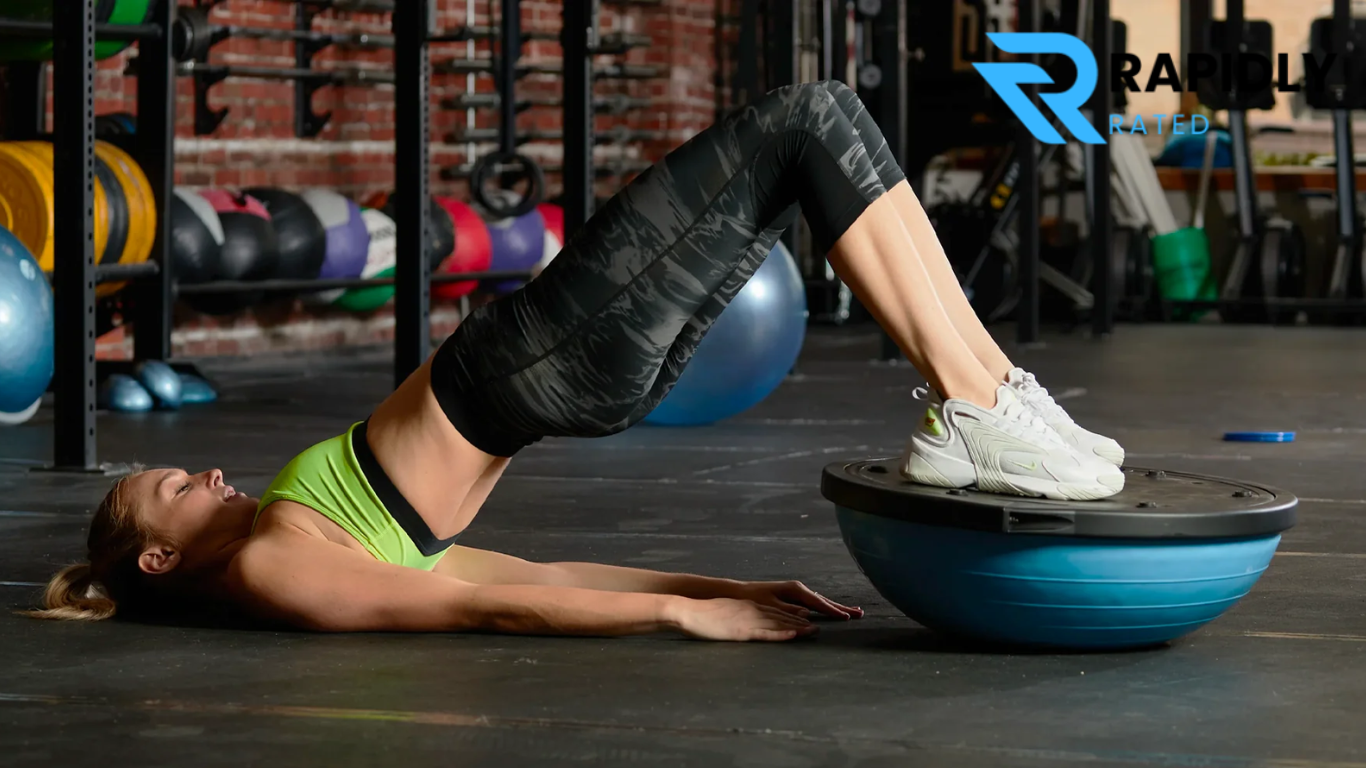Few people focus on balance exercise yet such training produces remarkable impacts both on fitness performance and injury management as well as body equilibrium maintenance. What stands as the top tool for balance training? The half yoga ball!
The ball combines stability ball features with rigid platform design to provide complete benefits in balancing while building muscle strength and bodily coordination.
Increased performance Spell out the benefits of a half yoga ball improves fitness for athletes following injury recovery and simple workout devotees striving toward better results. This article shows you how to maximize your balance training results through proper usage of this exceptional tool.
Why Use a Half Yoga Ball for Balance Training?
Before we jump into the workouts, let’s understand why a half yoga ball is such a valuable addition to your routine:
- Enhances Core Strength – Working out on an unstable surface automatically activates your core making your abdominal and lower back muscles stronger.
- Improves Coordination and Stability – The practice of exercising on obstacles that include pits and ridges will teach your body to stabilize itself which lowers your potential for accidents and injuries.
- Strengthens Smaller Stabilizing Muscles – The muscles which people frequently overlook become fundamental components for maintaining stability while reducing future damage risks.
- Versatile for Different Fitness Levels – Everyone from beginners to experienced individuals can adapt workouts for fitting their level of skill.
- Boosts Athletic Performance – By adding ball training to their regimen athletes improve their quick reactions and enhance their agility and develop stronger muscles.
Next we will begin explaining how you can effectively utilize this equipment.
Getting Started: Understanding the Basics
Before you start jumping on and off the half yoga ball, it’s essential to learn the two primary ways to use it:
- Flat Side Down – Novice athletes and weight-trained individuals benefit from its sturdy but demanding surface.
- Rounded Side Down – Using the exercise ball produces extreme instability that leads to advanced training of your balance system and core.
Pro Tip: Novice users should start with the ball flat side facing the ground before moving to challenging their balance by trying the opposite position.
Basic Balance Training Exercises
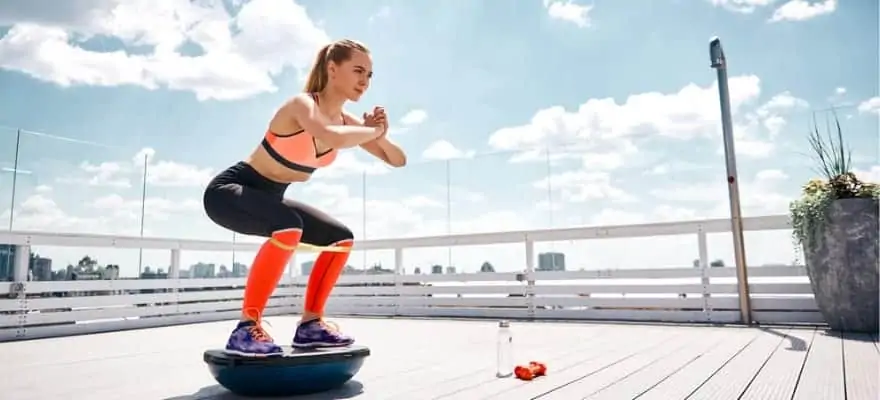
1. Basic Stand (Beginner-Friendly)
- Break the rounded surface of the ball with your feet established at hip distance.
- For proper stance maintain a slight bend in your knees as you engage your core muscles.
- Maintain your balance for at least 30–60 seconds.
- Want a challenge? Feel free to shut your eyes or swing your arms around when you’re ready.
2. Squats on the Half Yoga Ball
- Position your feet at hip width while standing on the rounded side of the ball.
- Move slowly toward a squat position making sure to maintain your balance throughout.
- You should perform 10–12 standing repetitions before repeating the exercise series.
- Your core activation along with leg strength will hit new heights with this move.
3. Single-Leg Balance Hold
- Release one foot from the ground as you position that foot into the center section of the ball.
- Retain your position for 20–30 seconds then move to the other leg.
- The exercise enhances ankle joint stability and develops your stabilizer muscle strength.
Core Strengthening Workouts
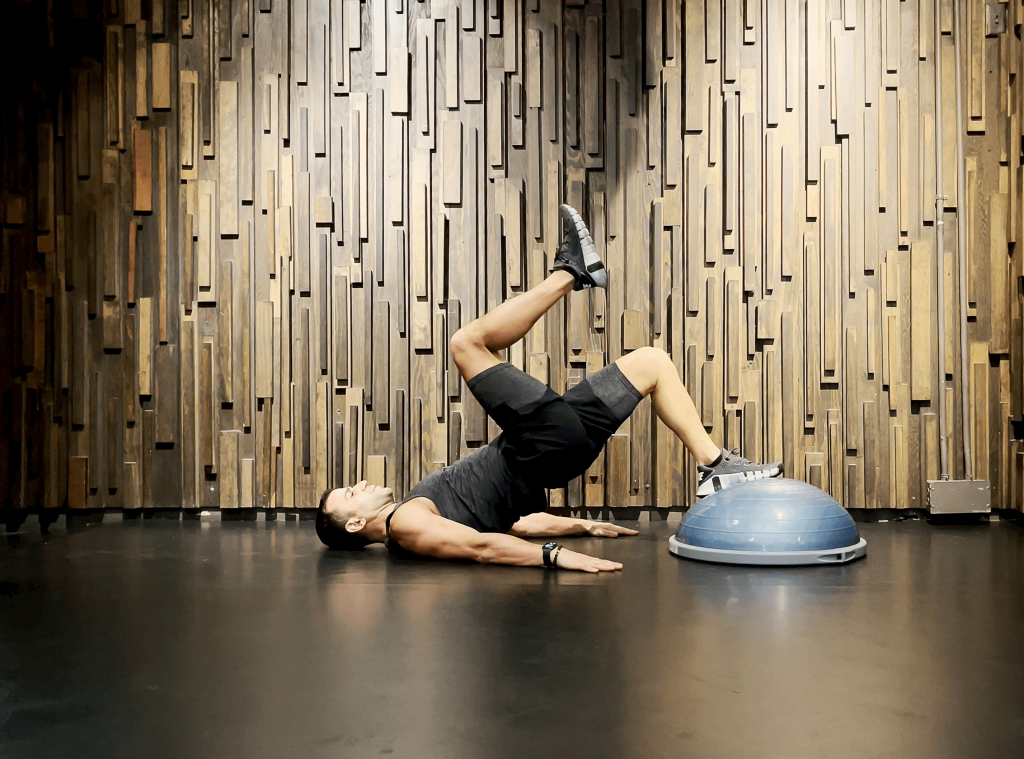
4. BOSU Plank Hold
- Position the flat sides of your forearms on the ball body as you maintain one straight line through your entire body.
- Focus your core muscles and maintain this position between 30 to 60 seconds.
- To level up, try lifting one leg off the ground!
5. Russian Twists
- Using the rounded portion of the ball keeps your feet a little elevated.
- Holding a weight in one hand or a medicine ball performs circles while standing.
- Exercise focuses on activating your obliques while also boosting your rotational stability abilities.
6. Mountain Climbers
- Position yourself with hands on the flat side edges while you maintain a standard push-up format.
- Steer your knees toward your chest by performing a rapid sequence of one-on-one movements.
- Moving between the positions will help you burn calories and practice better balance control.
Upper Body Strength & Stability
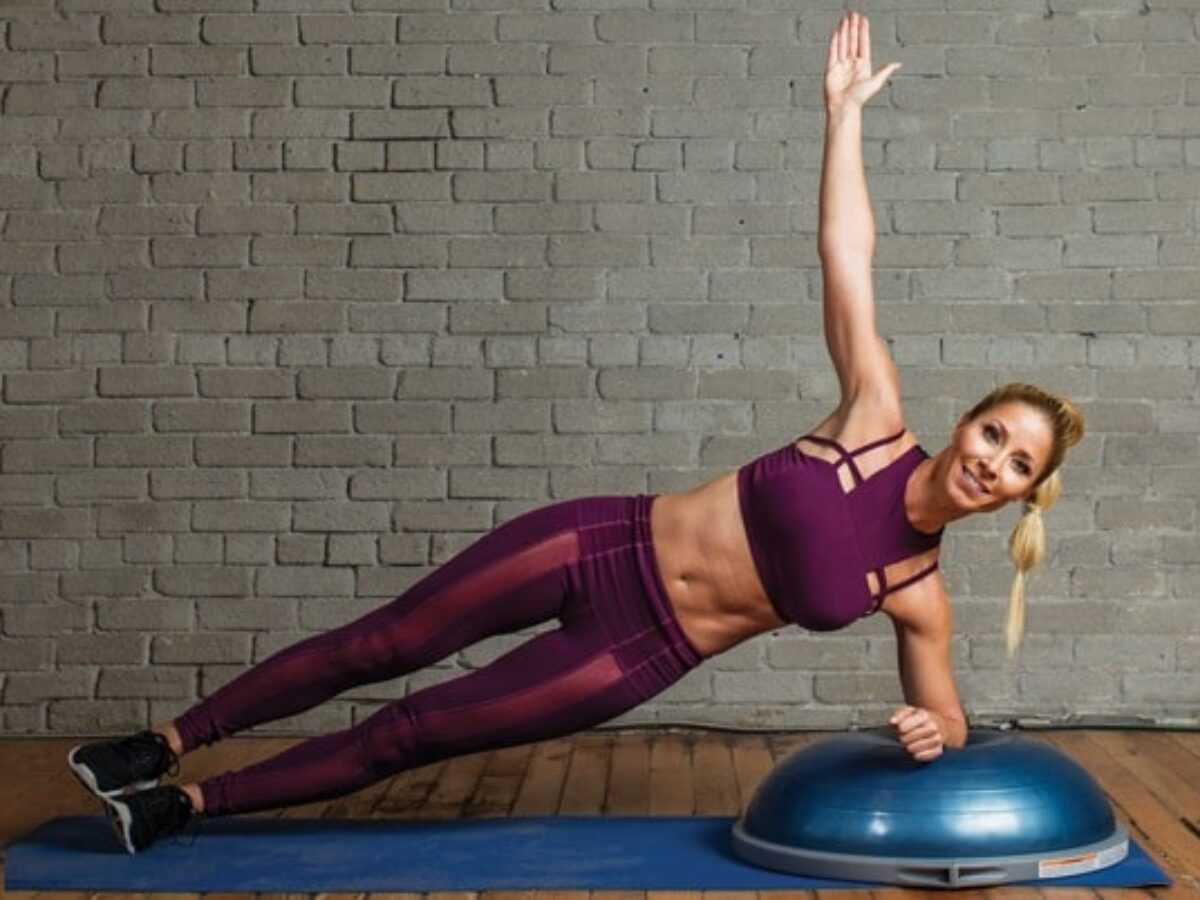
7. Push-Ups on the Half Yoga Ball
- Place your hands on the flat exterior as your feet reach beyond you.
- After push-up position, engage your core to complete a descent while ensuring it remains tight.
- The wobbly surface of this exercise turns push-ups into a challenging workout.
8. Overhead Shoulder Press
- Position yourself against the curved side yet hold dumbbells for this exercise.
- Hold weights above you as you stay balanced with your body.
- Your stabilizing muscles get activated while your shoulder muscles perform the exercise.
Lower Body & Functional Training
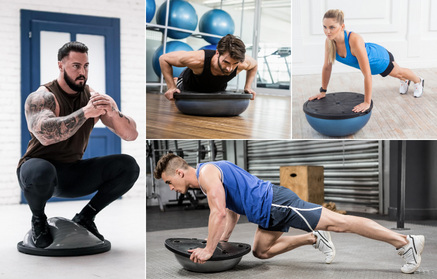
9. Lateral Step-Ups
- Step onto the rounded side followed by controlled descent with each step.
- Complete your repetition set of ten movements over both sides.
- This exercise routine increases your leg strength while also developing physical coordination.
10. Lunges with Half Ball
- Sit on the rounded side of the vibro plate and step into a lunge position with one foot.
- Stand up and change legs while performing this move.
- A killer move for leg strength and stability!
Advanced Balance Training Challenges
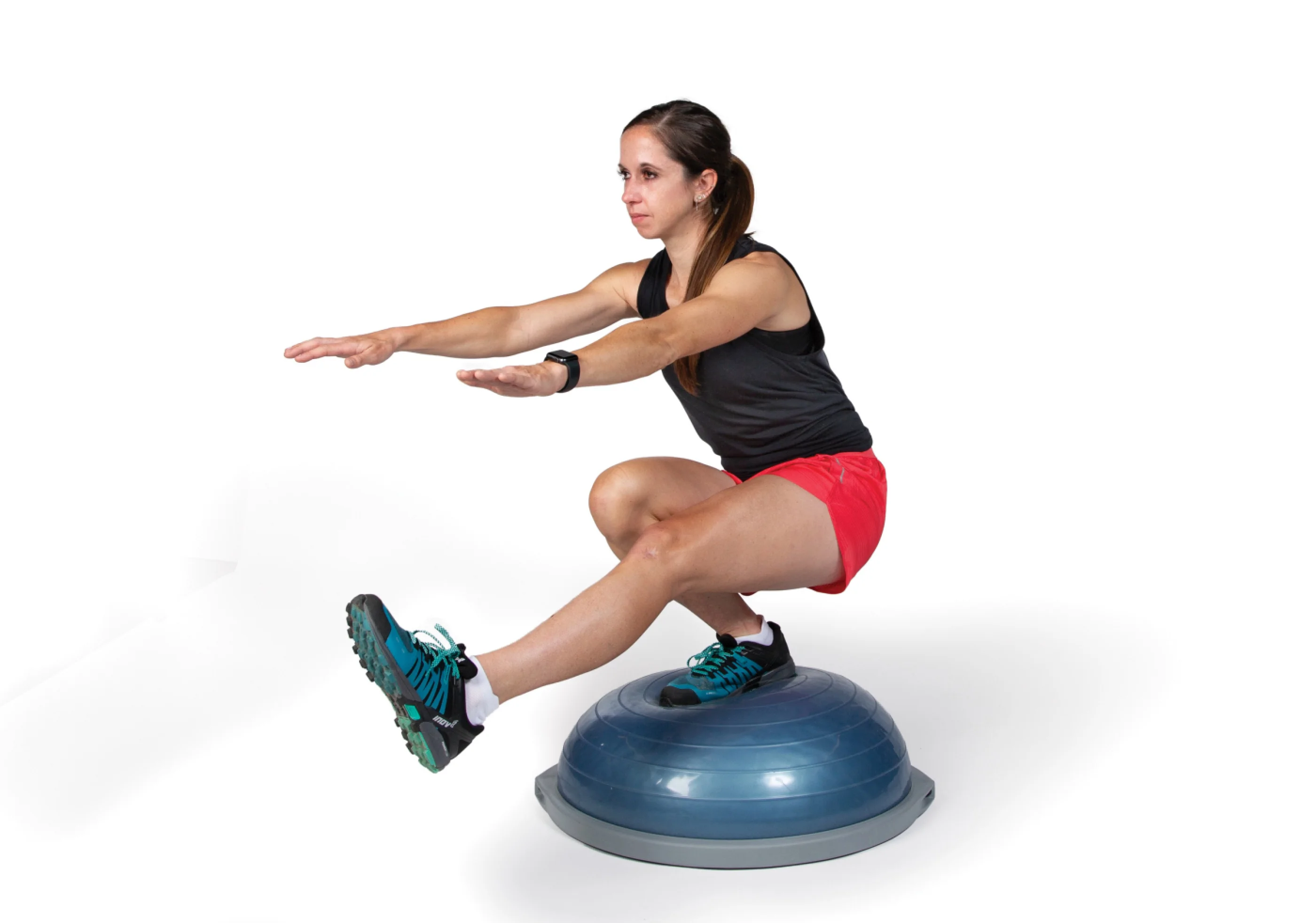
11. BOSU Burpees
- Start in a squat, holding the BOSU ball.
- Sustain a plank beginning position before jumping ahead while performing an overhead press with the exercise ball.
- A full-body balance challenge with cardio benefits!
12. Single-Leg Deadlifts
- Position yourself on the rounded area with legs to your side and hinge your body while maintaining one leg in position.
- Straighten your back before descending.
- The exercise tests your balance system while it strengthens your glutes and hamstrings simultaneously.
Common Mistakes to Avoid
- Ignoring Proper Form – Stability training requires control; avoid rushing through movements.
- Holding Your Breath – Stay relaxed and breathe naturally to improve stability.
- Skipping Core Engagement – Keeping your core tight is key to success!
- Starting Too Fast – Progress gradually to avoid falls and injuries.
Conclusion
A half yoga ball is a fantastic tool to enhance balance, core strength, and overall stability. Everyone from beginners to advanced athletes will gain from adding this exercise to their athletic regimen.
Throughout daily activities enjoy improved balance and strengthening from staying dedicated and facing challenges with this effective tool.
Frequently Asked Questions (FAQs)
1. Is a half yoga ball good for beginners?
Yes! Start with basic exercises before progressing to advanced moves.
2. How often should I use a half yoga ball?
Aim for 2–3 times per week for noticeable improvements.
3. Can I use a half yoga ball for weight training?
Absolutely! It enhances stability and engages core muscles during lifts.
4. Is it safe for people with knee issues?
Consult a doctor, but many find it beneficial for rehabilitation.
5. How do I clean my half yoga ball?
Wipe it down with a damp cloth and mild soap after each use.

